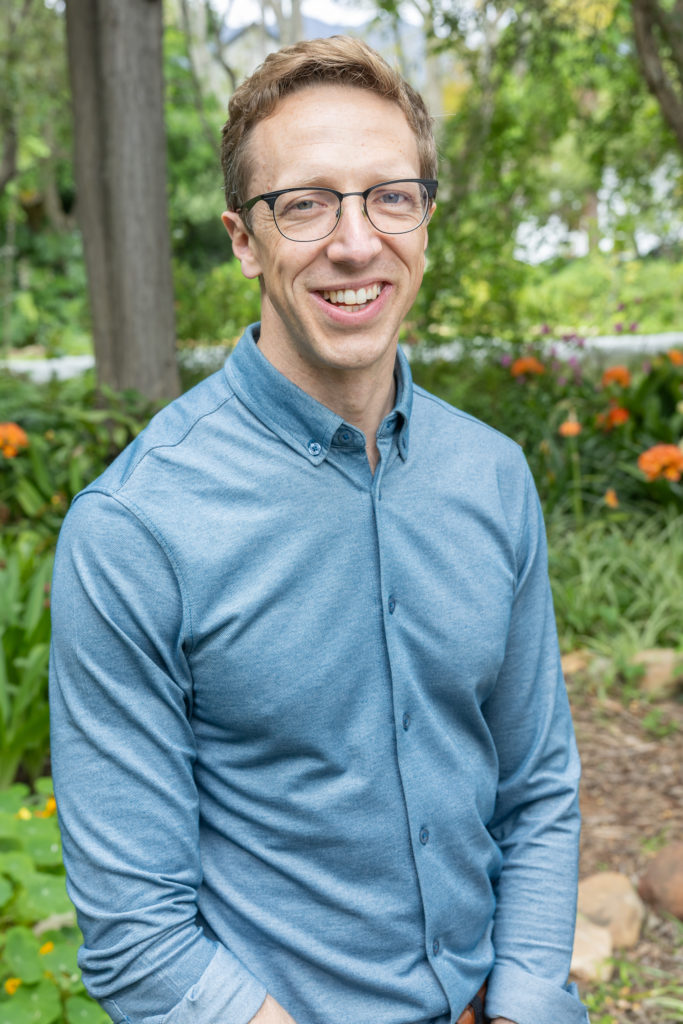“In this seminar, I consider the broad features of a literary tradition that obsesses over the inner lives of scientists after 1945. At turns suspicious and sympathetic, this tradition weighs ‘pure science’ in a moral calculus, often with didactic ends,” said Iso Lomso fellow Rick de Villiers of the Department of English at the University of the Free State. “Bertolt Brecht’s second version of The Life of Galileo damns the genius who places personal interest above those of the people; Friedrich Dürrenmatt’s The Physicists ironises scientific revocation; and, recent works by Benjamín Labatut and Cormac McCarthy fictionalise the renunciations of scientists, actual and imagined. This tradition is historically inflected: it asks to be read not just against paradigm-shifting developments after Hiroshima but alongside the confessional corpus of scientists who felt compelled to account if not atone for the fruits of their work. At the same time, this tradition shows affinity with a genre given to the avowal of wrong and the attempt to set it right: the palinode.”

De Villiers’s project, which he hopes will result in a book, seeks to explore how retraction and recantation take shape in experimental writing of the 20th and 21st Century. Its guiding motif is the palinode: a literary-philosophical form used to reject one’s own previous writing.
“In the context of scientific regret, this literary tradition compensates at times for what is felt but not said and vice versa.”
He pointed out that the origins of poetic recantation date from Greek lyric poet Stresichorus (630 to 555 BC) “who is largely forgotten but wrote about Helen of Troy being to blame for the Trojan War (1194 – 1184 BC) and was later forced to admit that what he said wasn’t true”.
He explained that there are at least three motives for recantation. The first is self-preservation (inspired by fear), and it comes about mostly in political or religious context where there is a threat hanging over you (e.g. Joan of Arc). The second motivation is self-correction; following new moral or intellectual insights, a person takes back what they’ve said out of humility. (e.g. St. Augustine’s Retractions). Finally, writers might recant for reasons of cynical self-promotion, since the cancellation “rekindles the very thing you supposedly reject”.
Scientific recantation has been a common occurrence across the centuries. De Villiers cited some famous historical examples of scientific recantation including Galileo Galilei, the father of modern physics, who was forced in 1632 by the Roman Inquisition to recant on his view that the Earth and other planets orbit the Sun. Another figure mentioned was the American mathematician Norbert Wiener who developed the science of cybernetics and became critical of the links between science and the military when some of his work was used for missile development. Likewise, the American plant physiologist Arthur Galston regretted that his biochemical work on plant defoliation was used in the development of Agent Orange – a chemical weapon used to devastating effect in the Vietnam War. Other examples included the German/French mathematician Arthur Grothendieck, whose work was also misused by the military, Robert Oppenheimer who expressed a sense of ‘sin’ about the development of the atomic bomb, and the 2024 Nobel laureate, Geoffrey Hinton (the so-called Godfather of Artificial Intelligence), who has spoken openly about the existential risks posed by AI.
Unexpected bedfellows – Brecht and Oppenheimer
Through close readings of various texts, De Villiers hopes to tease out the artistic and political ambivalence that underpins the literature of undoing. Included in his analysis are Bertold Brecht’s three versions of his play, the Life of Galileo.
“Brecht was fascinated by Galileo,” De Villiers explained. “He wrote three versions of the same play. The first version, written in German in 1938, valorised Galileo; the second version in English in 1947 cast Galileo as a coward who put science back by decades; and, the third version was a slightly expanded version of the second one published in 1953 in German.”
“Brecht came to see Galileo’s recantation as cowardly, not only because he recanted under threat of torture,” he continued, “but because he snuffed out a growing popular interest in science.”
“The second version of the play was written against the backdrop of Hiroshima; Brecht’s reading of history made him see a direct connection between Galileo and the development of the atomic bomb.”.”
“Brecht was a communist who believed science should be to the benefit of everyone.
There is a lot in the play about responsibility in science – particularly the communication of truths.”
Turning to Oppenheimer, De Villiers said that the “there’s been a great proliferation of fictions about him. He was a humanist but bore a burden very few humans have had to bear. Oppenheimer has been positioned both as a martyr of science, but”
“In an essay of 1948, ‘The Open Mind’, Oppenheimer wrote: ‘… the indispensable element in giving meaning to the dignity of man, and in making possible the taking of decision on the basis of honest conviction, is the openness of men’s minds, and the openness of whatever media there are for communion between men, free of restraint, free of repression.’”
“The many fictional representations of Oppenheimer either bring out a sense of guilt which Oppenheimer never fully articulated, or position him as a victim of political persecution.” Examples mentioned by De Villiers include the opera Doctor Atomic by John Adams, the play Oppenheimer by Tom Morton-Smith, the novel The Man who Would Be God by Haakon Chevalier and, of course, the Oscar-winning 2023 movie written and directed by Christopher Nolen.
Asked about how this work can be seen against current issues in academic freedom and cancel culture, De Villiers said: “Universities are not as free as they were five years ago – a global situation exacerbated by the situation in the US. Academics need to guard against pre-empting cancel culture and not expressing their thinking truthfully.”
Michelle Galloway: Part-time media officer at STIAS
Photograph: SCPS Photograph
